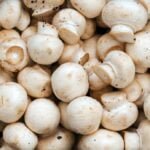Are Wood Ear mushrooms similar to Black Fungus
Title: Are Wood Ear Mushrooms Similar to Black Fungus? Exploring the Genus Auricularia and Their Texture
Introduction (150 words)
Are Wood Ear mushrooms similar to Black Funguskey phrase due to their similar appearance and texture when cooked. However, they both possess distinct characteristics that set them apart. In this informative post, we will delve into the world of mycology, specifically focusing on the similarities and differences between wood ear mushrooms and black fungus. We will explore their shared classification under the genus Auricularia and examine the fascinating textural properties that make them both popular ingredients in various cuisines.
Section 1: Understanding Wood Ear Mushrooms (400 words)
Wood ear mushrooms, scientifically known as Auricularia auricula-judae, are widespread across Asia and North America. These fungi typically grow on the trunks and branches of deciduous trees, appearing as dark, wrinkled, and ear-like structures. Wood ear mushrooms are commonly used in Chinese, Japanese, and Korean cuisines for their mild flavor and unique chewy texture. When cooked, they develop a soft, rubbery texture that easily absorbs the flavors of the dishes they are added to. The delicate flavor profile of wood ear mushrooms allows them to complement a wide range of ingredients and enhance the overall taste of a dish.
Section 2: Unveiling Black Fungus (400 words)
Black fungus, also belonging to the Auricularia genus, is scientifically referred to as Auricularia polytricha. This gelatinous mushroom is primarily found in tropical and subtropical regions. It has a distinct black, jelly-like appearance and features a crunchy yet tender texture after cooking. Black fungus is a popular ingredient in Chinese and Southeast Asian cuisines, known for its ability to provide a delightful crunch to stir-fries, soups, and salads. The texture of black fungus sets it apart from wood ear mushrooms, adding a contrasting element to dishes. Before cooking, black fungus is often soaked in water to rehydrate and ensure an enjoyable eating experience.
Section 3: Exploring Similarities (300 words)
Wood ear mushrooms and black fungus share several striking similarities due to their shared classification under the Auricularia genus. Both mushrooms have thin, gelatinous fruiting bodies that develop a chewy texture when cooked. Their similar texture enables them to absorb flavors from soups, stir-fries, and other dishes easily, enhancing the overall taste. Additionally, they both offer a mild taste that complements other stronger ingredients in various recipes. These similarities make them versatile ingredients that can be used in a wide array of culinary applications.
Section 4: Textural Differences (300 words)
While wood ear mushrooms and black fungus may have a similar texture, they do exhibit some noticeable differences. Wood ear mushrooms have a softer, more rubbery texture compared to black fungus. When cooked, they become slightly chewy and add a pleasant mouthfeel to dishes. On the other hand, black fungus has a distinctive crunch that adds an interesting textural contrast to dishes. The crunchiness of black fungus makes it a popular choice for stir-fries and salads where texture plays a significant role.
Section 5: Culinary Uses (400 words)
Wood ear mushrooms and black fungus are versatile ingredients used in numerous culinary applications. Wood ear mushrooms are often added to stir-fries, hot pots, and soups, where their absorbing nature enhances the flavors of the dish. They are also frequently used in vegetarian and vegan recipes as a substitute for meat due to their satisfying chewiness. Their mild flavor and unique texture make them suitable for a wide range of cuisines and dishes.
On the other hand, black fungus is renowned for its inclusion in various cold dishes, such as salads or appetizer platters, as its crunchy texture adds a delightful element to the overall dish. It is also commonly used in stir-fries and soups to add a contrasting texture. The ability of black fungus to retain its crunch even after cooking makes it a popular choice when a dish requires a crispy component.
Conclusion (150 words)
Wood ear mushrooms and black fungus, despite their similar appearance and texture, have distinct characteristics that set them apart. Wood ear mushrooms offer a soft, rubbery texture, while black fungus provides a satisfying crunch. Their unique attributes and versatile uses make them popular ingredients in various Asian cuisines. Understanding these differences allows you to appreciate their qualities and incorporate them better into your culinary endeavors. Whether you prefer the chewy texture of wood ear mushrooms or the crunchy bite of black fungus, both mushrooms can add depth and flavor to your dishes.




